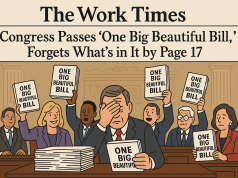[ad_1]
On an engineering project, Alex’s boss offered “fifty.” Alex negotiated it up to “sixty.” The trouble was, the boss meant “sixty-thousand dollars a year”; Alex was counting on sixty dollars an hour! That’s double: $120,000/year!
Unlikely? Yes, but it really happened!
Another example: Greg exceeded his sales quota. He was expecting a bonus equal to 10% if he reached or exceeded his goal. He received only a $5,000 bonus equal to 10% of his base SALARY not 10% of sales.
And there are hundreds more misunderstandings and memory lapses that can occur if you don’t “get it in writing.” Dates, durations, promotions, vacation, travel and other ancillary expenses, etc.
How can you prevent negotiating your compensation package only to find out later different from what you [thought you] negotiated? You should get it in writing.
On the other hand can “Getting It In Writing” be overkill? When the employer tells you out loud what the salary is, isn’t it tantamount to saying “your word isn’t good enough for me?”
Expensive misunderstandings can occur in the salary negotiation process, but you can prevent them easily enough by writing things down at the proper time.
Here’s four Guidelines that’ll help avoid these mistakes.
Guideline 1: When to get it in writing? Always get it in writing.
This is an ordinary and customary thing companies do – even small companies. Once you’ve finished the negotiations the employer will usually take the first step and say, “Well get this to you as a formal written offer by [date].”
If that doesn’t happen, then you should bring up the subject and leave it in their hands, but still with a deadline attached. Rarely, the written offer will be different than you expected. If that happens don’t delay at all in bringing it to the attention of the hiring decision maker. Guideline 3, “clarity initials” will minimize chances of a discrepancy showing up at this juncture.
Guideline 2: When to put it in writing – meaning when should you take the initiative and write up the agreement yourself.
Urgency is the key indicator. Often by the time someone is hired, the needs they’re expected to fill have now become pressing. In the urgency to get you in there up and running, your written offer can get lost in the shuffle. The longer the time period between the negotiation conversation and the written offer, the more likely things will be forgotten, recalled incorrectly, etc., on both your parts.
So, if it looks like that’s a possibility, you should offer to write it out. “Mr. Employer, since you want me at the training on Monday and fully operational by Wednesday, maybe I can lighten the load for you and write up what we agreed to in a letter of acceptance. Would that be okay?”
Guideline 3: Using the “clarity initials”
No matter who is going to compose the written agreement later, you’re always better off to use “initials” to clarify the negotiation right then and there. Why “initials”? Getting people to sign something often scares them; getting them to initial something feels less weighty, but it accomplishes the goal: something written right there in the negotiating session. That’s when things are fresh, and just a few written notes can avoid any surprises later.
How should you broach the subject? At the end of the negotiating session say, “Why don’t we just jot down what we’ve covered here, and we’ll sign an actual letter of agreement later. Sound OK?”
Write it down. When you’re done, give it to Ms. Employer and say, “is that accurate for now?” She says yes, and then you say, “Okay, let’s initial it and we’re good to go!” You initial it, and turn it to her to do the same. Copy it if convenient, and you keep an original.
Initial it? Isn’t that accusing them of being untrustworthy? Isn’t that overkill if it’s just one number and benefits? Not if you use the rationale of “clarity initials”: i.e. this is not about trust, it’s about clarity. Here’s another way to say it: “Here’s the notes I’ve got on compensation [read your notes], and I know that it’s always important to be very clear whenever money is involved. So, I’ll go ahead and initial this, and when you do the same, that ought to make sure we’re on the same page, OK?”
Guideline 4: Most negotiations have two back-and-forths. The company makes an offer; the candidate counter offers. The company makes a second offer; both reach a final agreement. In that average case, get it in writing at the end.
If the negotiation is complicated and has several rounds, use the Clarity Initials Principle to determine when to write it down. Formulations of stock value, setting performance criteria, laboratory and equipment requirements, succession guarantees, change in management clauses, severance, etc., all might take some back-and-forth time.
As you progress through the negotiations, you won’t need initials on every time, but whenever you think there might be any chance of misunderstandings, put it in writing. Don’t worry about upsetting your Mr. Employer. After the second time, he will smile, “Oh yes, you’re making sure we’re clear.”
[ad_2]
Source by JK Chapman




























